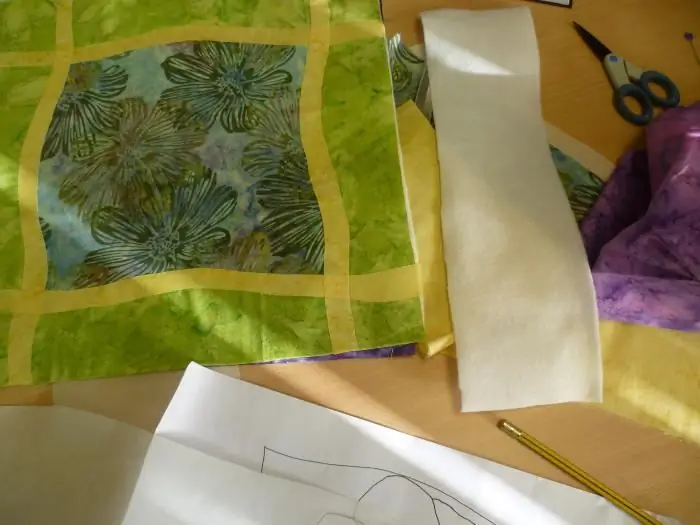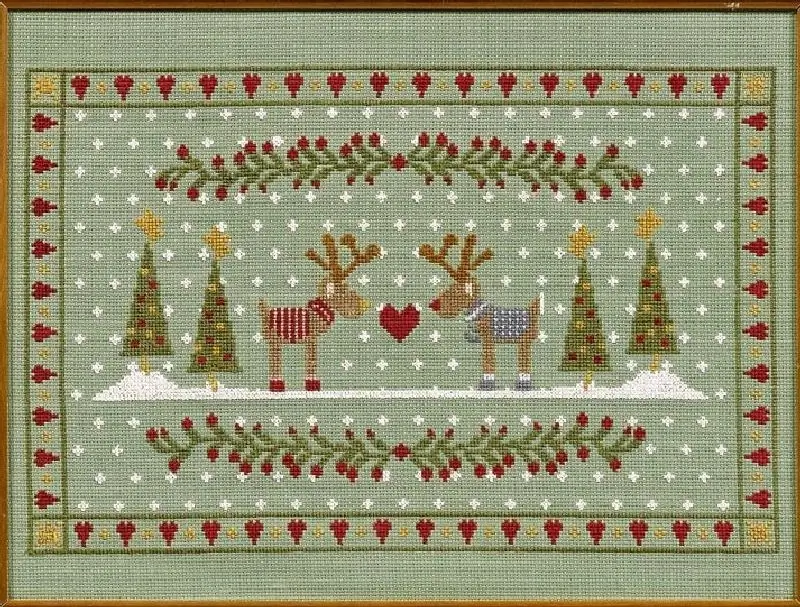
Inhaltsverzeichnis:
- Welche Materialien werden zur Herstellung von Chenille benötigt?
- Vorbereitungsphase
- Chenille-Stoff herstellen
- Beschreibung der Herstellung eines Chenille-Spielzeugs
- Kissen in "Chenille"-Technik - Stickfoto
- Schema zum Nähen eines Teppichs in "Chenille"-Technik
- Tasche aus Chenille-Jeans
- Chenille-Topflappen
- Patchwork: Gebäudekompositionen
- Patchwork-Muster: Schachbrettmuster
- Autor Sierra Becker [email protected].
- Public 2024-02-26 04:44.
- Zuletzt bearbeitet 2025-01-22 22:11.
In jedem Haus gibt es wahrscheinlich viele Abfälle und sogar fertige Produkte, die schade zum Wegwerfen sind und mit denen nichts zu tun hat. Jetzt kann dieses Problem jedoch mit verschiedenen Arten von Patchwork gelöst werden, zu denen die "Chenille" -Technik gehört. Es ermöglicht Ihnen, aus mehreren Stofflagen ein neues flauschiges Material für die Herstellung von Produkten aller Art zu erh alten.
Welche Materialien werden zur Herstellung von Chenille benötigt?
Die Leinwand, für deren Herstellung die "Chenille" -Technik verwendet wurde, besteht aus der oberen vorderen Schicht, mittleren Schichten (von 3 bis 5), der unteren Schicht - der Basis. Meistens wird ein Stoff als oberste Schicht verwendet, der sich von den inneren Schichten mit einem großen hellen Muster abhebt. Aber es hängt alles von den Vorlieben der Näherin ab.

Was auch immer Sie mit der "Chenille"-Technik nähen möchten, zuerst müssen Sie eine Leinwand herstellen. Dazu benötigen Sie 5-6 Stoffstücke, die farblich und unterschiedlich sein könnenTextur, die gewünschte Größe, je nachdem, was als nächstes daraus gemacht wird. Idealerweise, wenn die Richtungen der gemeinsamen Fäden in allen Lagen übereinstimmen, aber auch ihre senkrechte Anordnung möglich ist.
Außerdem benötigt man für die Chenille-Nähtechnik ein Metalllineal, einen angespitzten Bleistift, eine Nähunterlage mit Zentimetermarkierungen, eine Vliesunterlage, Nähnadeln, eine scharfe Schere und eine Nähmaschine.
Vorbereitungsphase
Um einen "Chenille"-Stoff zu erh alten, ist es notwendig, den Vliesstoff in einem Winkel von 45 Grad zu den Markierungslinien des Teppichs zu platzieren und mit einem spitzen Bleistift alle Zentimeter Linien zu ziehen. Die Stichlinien sollten in einem 45-Grad-Winkel zu den Quer- und Längsfäden stehen. Da der in diesem Winkel geschnittene Stoff schöne Fransen hat und nicht nur ausfranst.
So, die Linien sind markiert, was verlangt die "Chenille"-Technik als nächstes von der Näherin? Eine Meisterklasse zur Herstellung dieses Materials wird nur zum ersten Mal und dann auf ähnliche Weise benötigt. Jede Näherin kann Leinwände mit einer Vielzahl von Mustern erstellen. Um die Arbeit fortzusetzen, müssen alle Stofflagen mit Stecknadeln zusammengesteckt und die Basis mit Linien auf der falschen Seite festgesteckt werden. Alle Lagen sind mit Stecknadeln gesp alten, damit sie sich nicht auseinander bewegen und beim Nähen nicht stören.

Chenille-Stoff herstellen
Die Stiche sollten von der Mitte zu den Rändern genäht werden, unabhängig vom gewählten Muster - Quadrat, Raute, Spirale,diagonale, gerade Linien oder florale Muster. Wenn alle Linien genäht sind, sollten die Stifte entfernt, die Vliesunterlage entfernt und alle Stoffschichten mit Ausnahme der unteren Schicht zwischen den Linien der Linien geschnitten werden. Darüber hinaus beinh altet die "Chenille"-Technik, den Stoff mit Wasser zu benetzen und damit Bewegungen auszuführen, die das Händewaschen imitieren. Im Laufe dieser Arbeit wird ein Rand erscheinen. Das Reiben sollte so lange erfolgen, bis es über die gesamte Fläche gleichmäßig wird. Um den besten Effekt zu erzielen, kann das Produkt mit einer Kleiderbürste mit harten Borsten zerzaust werden.
Als nächstes muss der Stoff auf einer ebenen Fläche getrocknet werden und kann für weitere Zwecke verwendet werden. Glücklicherweise können Sie mit der „Chenille“-Technik die unterschiedlichsten Ideen zum Leben erwecken. Der als Ergebnis aller obigen Vorgänge erh altene Stoff fühlt sich sehr flauschig und weich an. Deshalb wird es oft zur Herstellung von Kissen, Kuscheltieren, Teppichen und Servietten verwendet.
Beschreibung der Herstellung eines Chenille-Spielzeugs

Kuscheltiere sind in fast jedem Haush alt vorhanden und umgeben Kinder von klein auf, aber manchmal sind auch Erwachsene verrückt nach ihnen, besonders wenn sie schön und originell sind. Darüber hinaus können einige Kuscheltiere als Kissen in einem Kinderzimmer oder Wohnzimmer dienen. Und wenn diese Produkte auch noch „hausgemacht“sind, dann kommt man aus der Bewunderung einfach nicht mehr heraus. Chenille-Spielzeug gehört dazu.
Diese Art von Patchwork gemeistert zu haben für mehrMit einfachen Produkten kann jede Näherin ein Stofftier herstellen. Am häufigsten werden Bären, Katzen, Hasen und viele andere Tiere in der "Chenille" -Technik genäht. Es ist erwähnenswert, dass sie sehr originell sind, da sie wie Tierhaare aussehen und sich anfühlen. Um mit der Herstellung eines Spielzeugs mit der "Chenille" -Technik zu beginnen, müssen die Details ausgeschnitten werden - Kopf, Körper, Arme, Beine, Ohren. In diesem Fall muss jeder Teil, sowohl die Rückseite als auch die Vorderseite, aus 4-6 Stoffarten geschnitten werden, die anschließend zusammengenäht und dann auf die oben beschriebene Weise geschnitten und zerzaust werden, um eine "Chenille" -Leinwand zu bilden. Als nächstes müssen Rücken- und Vorderteil zusammengenäht, mit Füllpolyester gefüllt und zu einem fertigen Spielzeug zusammengesetzt werden.
Kissen in "Chenille"-Technik - Stickfoto
Sofakissen sind eine großartige Möglichkeit, jedes Zuhause zu dekorieren. Und wenn sie auch noch in einer so ungewöhnlichen Technik wie „Chenille“hergestellt werden, dann ist der Effekt einfach umwerfend. Um ein Kissen in Chenille-Technik herzustellen, benötigen Sie also 4 Stoffteile mit einer Größe von 35 x 35 cm. Idealerweise sollten alle 4 Teile unterschiedliche Farben haben, dann wird das fertige Produkt origineller. Um die Rückseite des Kissens herzustellen, benötigen Sie zwei Rechtecke, die zusammen etwas größer sind als die Klappe der Vorderwand des Produkts.

Zwischen diesen Rechtecken wird ein Reißverschluss eingenäht, durch den das Kissen gefüllt werden kann. Außerdem benötigen Sie scharfe Stifteeine Schere, eine steife Kleiderbürste und natürlich eine Nähmaschine.
Zunächst musst du alle 4 Stoffquadrate gleichmäßig aneinanderlegen und dich für das Muster entscheiden. Es kann eine Diagonale, gerade Linien, eine Spirale, eine Raute, ein Quadrat und viele andere sein. Je nach Muster ist es notwendig, den Stoff mit einer Stecknadel abzutrennen und entlang dieser Kontur zu nähen. Als nächstes müssen Sie mit 4 vorbereiteten Klappen alle Operationen ausführen, die die "Chenille" -Technik vorsieht: Vorder- und Rückwand nähen und das Kissen durch einen vorab genähten Reißverschluss mit Polyesterwatte oder einem anderen geeigneten Material füllen.
Schema zum Nähen eines Teppichs in "Chenille"-Technik
Rug ist ein weiterer der vielen Artikel, für die sich die Chenille-Technik hervorragend eignet. Eine Meisterklasse, die jeden Schritt dieser Arbeit beschreibt, ist nicht erforderlich, aber ein paar Worte zur Herstellung dieses Produkts sind dennoch erwähnenswert. Da das Ergebnis ein dichter Teppich sein soll, der im Schlafzimmer neben dem Bett oder im Badezimmer verlegt werden kann, ist es wichtig, für seine Herstellung so viele Schichten wie möglich zu verwenden, vorzugsweise die dichtesten Stoffe - die Dicke des Teppichs sollte nur durch die Fähigkeiten Ihrer Nähmaschine begrenzt werden.
Die allererste Schicht, die nicht geschnitten wird, sollte so dicht wie möglich sein, und dann können Sie Stoffe in jeder Farbe und Textur verwenden, je nachdem, wie Sie das Aussehen des Teppichs geplant haben. Alle Schichten werden nach dem oben bereits beschriebenen Schema zusammengenäht und dann mit einer scharfen Schere bis zur Basis geschnitten und gesäumt. OriginalitätDer Teppich kann durch Aufnähen einer Rose oder eines Tieres auf die obere Kugel gegeben werden, deren Details aus kontrastierendem Stoff ausgeschnitten werden müssen.
Tasche aus Chenille-Jeans
In jedem modernen Zuhause gibt es zwangsläufig ein paar ungewollte Jeanshosen, die an einer bestimmten Stelle bereits ausgefranst sind, aber der Rest des Stoffes ist trotzdem noch gut brauchbar. Warum also nicht im Patchwork eine originelle Tasche daraus nähen? Schemata zur Herstellung einer Tasche mit der "Chenille" -Technik sind absolut nicht erforderlich, nur Ihre Vorstellungskraft ist erforderlich, insbesondere bei der Dekoration des Produkts.

Also, du solltest deine Jeans nehmen und sie in Quadrate oder Rechtecke der Größe schneiden, die du für eine Tasche haben möchtest. Auf jeder Seite des Produkts benötigen Sie 3-4 Stofflappen. Es ist erwähnenswert, dass alle oben beschriebenen Merkmale der Herstellung von Chenille in gleichem Maße für Denim gelten. Wenn beide Teile der Tasche fertig sind, müssen Sie sie zusammennähen, einen Reißverschluss einsetzen, Henkel annähen und nach Belieben dekorieren. Zu diesem Zweck können Sie sogar Stickereien und Applikationen verwenden, die häufig auf den Taschen derselben Jeanshose vorhanden sind.
Chenille-Topflappen
Ein Topflappen ist eine weitere Sache, die im Haus oder besser gesagt in der Küche benötigt wird. Je mehr es gibt, desto besser, denn die Küche hat viele heiße Töpfe, Tassen, Pfannen und andere Utensilien, die ständig bewegt und irgendwo platziert werden müssen, um Schäden zu vermeiden. Möbel, Tischdecken und Wachstücher.

Es ist auch gut, dass für die Herstellung von Topflappen nicht viel Stoff benötigt wird, und es muss kein besonderer Stoff sein, es reicht eine der Optionen, die für viele andere Dinge nicht mehr geeignet sind. Es ist auch erwähnenswert, dass Sie nicht zu viele Schichten benötigen, um einen Topflappen zu nähen - 3 reichen aus, sonst ist die Verwendung unpraktisch. Für ein ästhetischeres Erscheinungsbild sollte die erste Schicht - die Basis der Heftzwecke - zu den nachfolgenden Schichten umgestülpt und nach Abschluss der Herstellung mit der "Chenille" -Technik das Produkt zugeschnitten und die Kanten mit einem Kontrast ummantelt werden Stoff oder Zopf, denken Sie daran, eine Aufhängeschlaufe anzunähen.
Patchwork: Gebäudekompositionen
Technik "Chenille" ist nicht die einzige Art von Patchwork. Es gibt viele andere Arten davon, die nicht weniger Aufmerksamkeit verdienen. Dank verschiedener Kombinationen von Formen, Farben und Texturen von Stoffaufnähern können Sie als Ergebnis ein echtes Kunstwerk erh alten. Der Beginn der Arbeit mit Stoffstücken folgt aus der Bestimmung der Größe und geometrischen Form des zukünftigen Produkts. Am einfachsten ist eine Zeichnung, die aus einzelnen Motiven besteht, deren Ränder durch einen Rand begrenzt sind. Die Hauptsache ist, ein Gleichgewicht zwischen dem beabsichtigten Muster und dem Hintergrund zu wahren.
Beim Erstellen einer Komposition sollte der Mitte besondere Aufmerksamkeit geschenkt werden. Die Mitte von Ornamenten, die nach einem bestimmten Schema hergestellt wurden, muss mit einem Fleck in Kontrastfarbe oder mit einem großen Muster hervorgehoben werden. Die kostenlose Anwendung ermöglicht die Auswahl des Zentrums sowohl in Größe als auchund Farbe. Um ein schönes Patchwork zu erh alten, sollten dunkle und größere Formen unten in der Komposition sein und kleine und helle oben.
Patchwork-Muster: Schachbrettmuster
Produkte, für deren Herstellung Schach-Patchwork verwendet wurde, sehen sehr originell aus. Die Schemata können in diesem Fall auf vielfältige Weise verwendet werden.

So ist es zum Beispiel am einfachsten, abwechselnd Quadrate aus zwei Stoffarten zu Streifen und dann Streifen zu einer Leinwand zu nähen, wobei jeder zweite Streifen auf den Kopf gestellt wird, um ein Schachbrettmuster zu bilden.
Sie können auch ein Schachbrettmuster erh alten, indem Sie ein diagonales Muster verwenden. In diesem Fall ist es jedoch besser, Stoffe in 4 verschiedenen Farben zu verwenden. Zuerst müssen Sie mehrere Streifen in verschiedenen Farben zusammennähen, sie dann quer in Streifen schneiden und diese wiederum diagonal platzieren, ein Quadrat verschieben und zusammennähen.
Wie Sie sehen, gibt es viele Möglichkeiten, scheinbar unnötige Stoffreste zu verwenden, also werfen Sie keine getragenen oder aus der Mode gekommenen Artikel voreilig weg, denn Sie können ihnen neues Leben einhauchen.
Empfohlen:
Brasilianische Stickerei (Technik): Meisterklasse, Schemata

Näherinnen lernen ständig neue Arbeitsmethoden. Zum Beispiel brasilianische dreidimensionale Stickereien - was für eine entzückende Schönheit! Und die Hände von Handwerkerinnen, die gerne Handarbeiten machen, fragen sich, ob sie anfangen sollen, Schönheit zu schaffen
Quilling: Schneeflocken für Anfänger. Schneeflocken in Quilling-Technik: Schemata

Es gibt mehr als eine Meisterklasse, in der Sie lernen können, wie einfach es ist, eine Quilling-Schneeflocke zu erstellen. Für Anfänger wird es überhaupt nicht schwierig sein, wenn Sie den gesamten Prozess aufschlüsseln
Faszinierende Patchwork-Technik: Schemata, nützliche Tipps, frische Ideen

Nachdem Sie den Artikel gelesen haben, erfahren Sie noch mehr über die Patchwork-Handtechnik. Mit Ihren eigenen Händen können Sie aus schelmischen Fetzen wunderbare Produkte herstellen, die das Haus schmücken und ihm Gemütlichkeit verleihen
DIY-Technik "Venezianische Spitze": Beschreibung, Diagramme und Empfehlungen

Venezianische Spitze ist ein äußerst zarter, eleganter und luxuriöser durchbrochener Stoff. Seine Besonderheit ist die Kombination aus voluminösen Linien und kleinen Details mit Flächen, die mit feinen Maschen gefüllt sind
Was ist ein Sampler? Beschreibung, Technik, Foto

Kreuzstich ist eine der verschiedenen Arten von Handarbeiten, da sie verschiedene Techniken und Elemente kombinieren kann. Nur wenige wissen, was ein Sampler ist, obwohl die Bilder in diesem Stil originell und reichh altig sind. Dies ist eine Kombination aus kleinen Plots mit demselben Thema, aber mit unterschiedlichen Stichen. Sie können jeden Raum dekorieren oder in angewandter Stickerei verwenden
